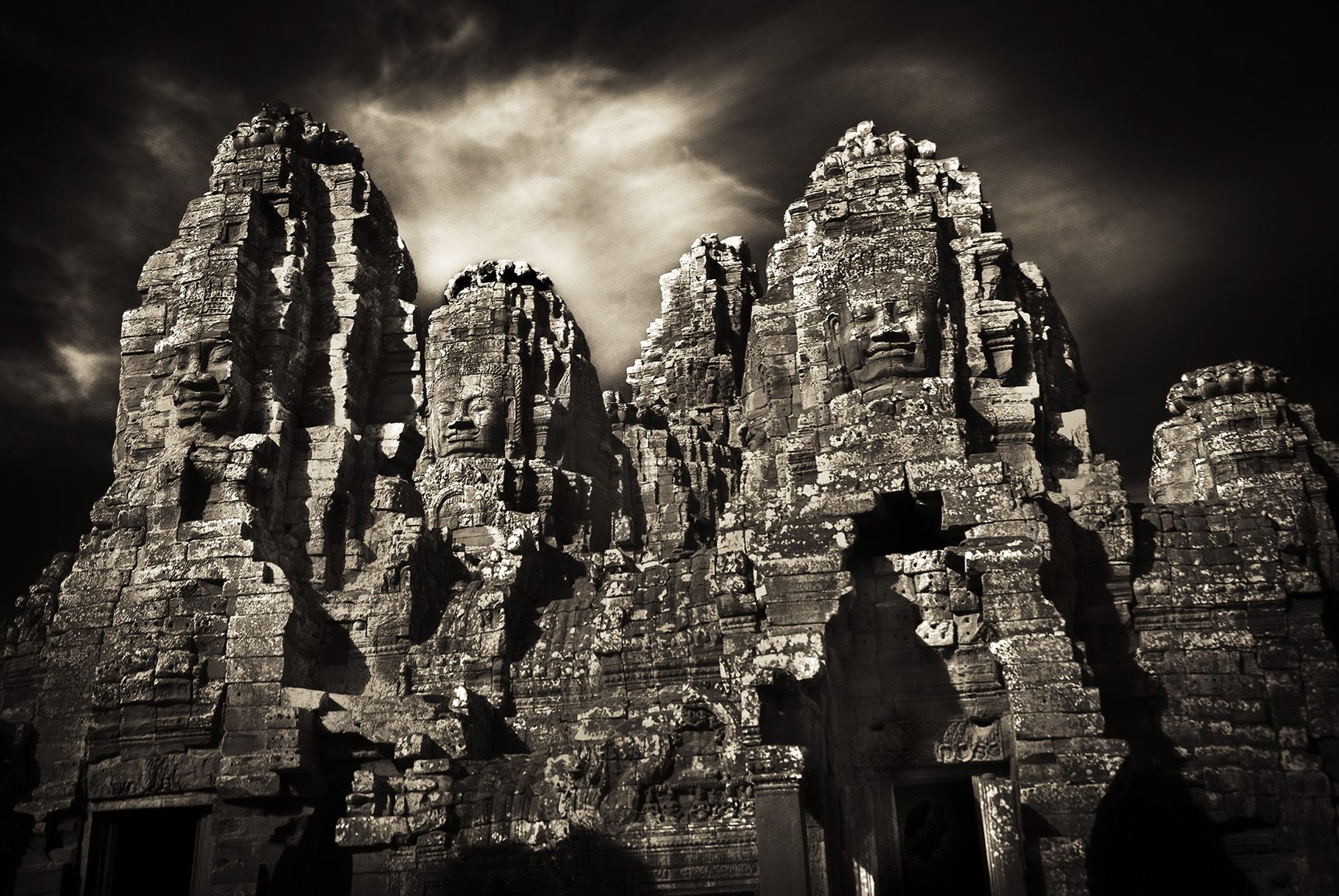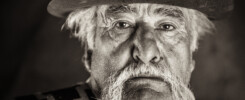(Interview published on the Royal Photographic Society’s website in 2016, when Chelin was Chair of the Archaeology and Heritage Group)
Angkor is one of the most important archaeological sites of Southeast Asia. For several centuries it was the centre of the Khmer Kingdom. With impressive monuments, several different ancient urban plans and large water reservoirs, the site in Siem Reap, Cambodia is a unique concentration of features testifying to an exceptional civilisation; it exemplifies cultural, religious and symbolic values, and it has high architectural, archaeological and artistic significance. Chelin Miller interviewed award-winning photographer and long-time resident of Siem Reap John McDermott to find out more about this wondrous place.

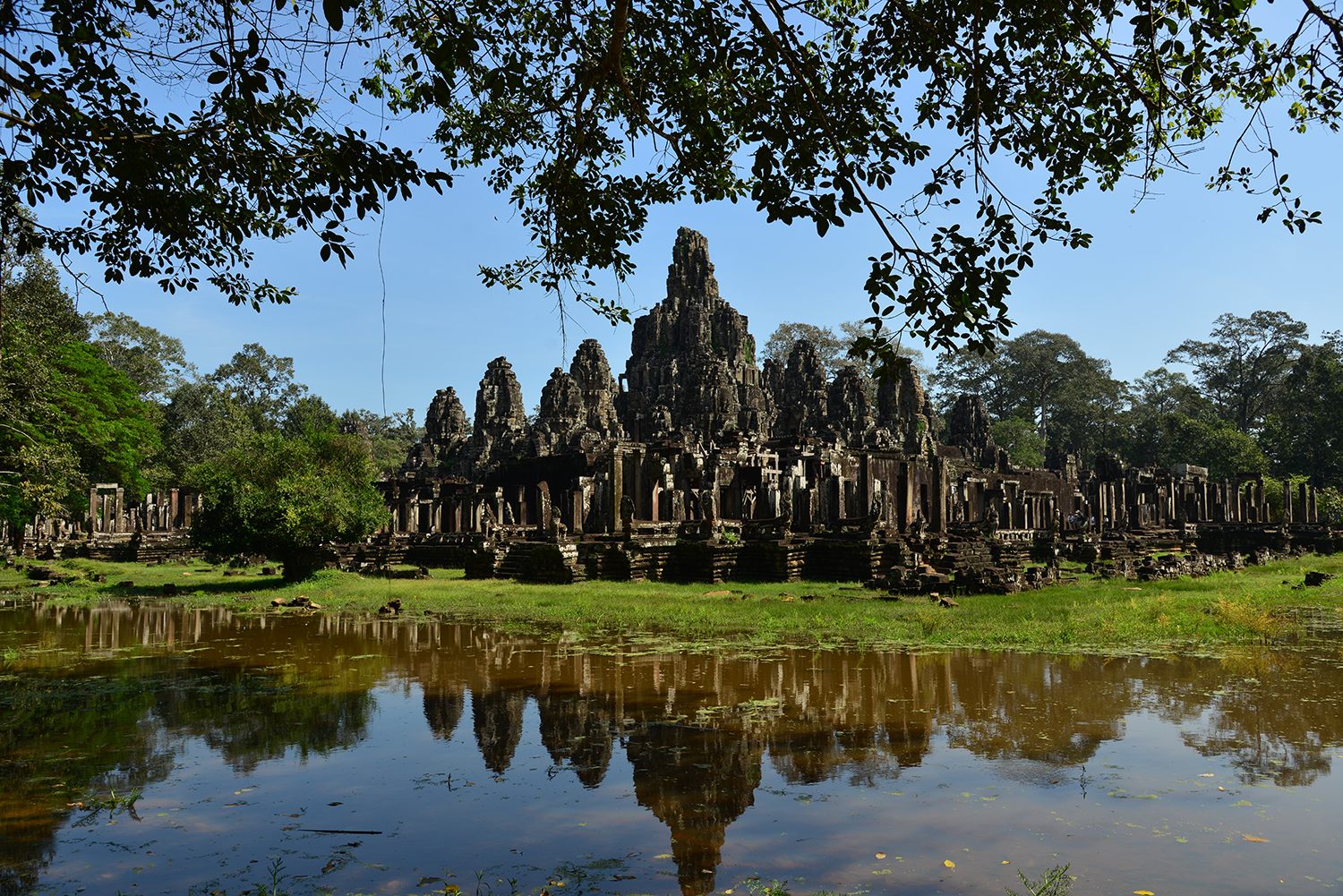
CM: When you moved to Asia in 1993 and came to Angkor to photograph a solar eclipse, what attracted you to this heritage site?
I was based in Bangkok and traveled throughout Asia photographing magazine stories, so I was familiar with much of the territory. I had read about Angkor while studying the region so I knew it was a very special place with an air of mystery about it. When I heard the upcoming solar eclipse would pass directly over the temples, I immediately booked a flight, knowing what a spectacular experience it would be.

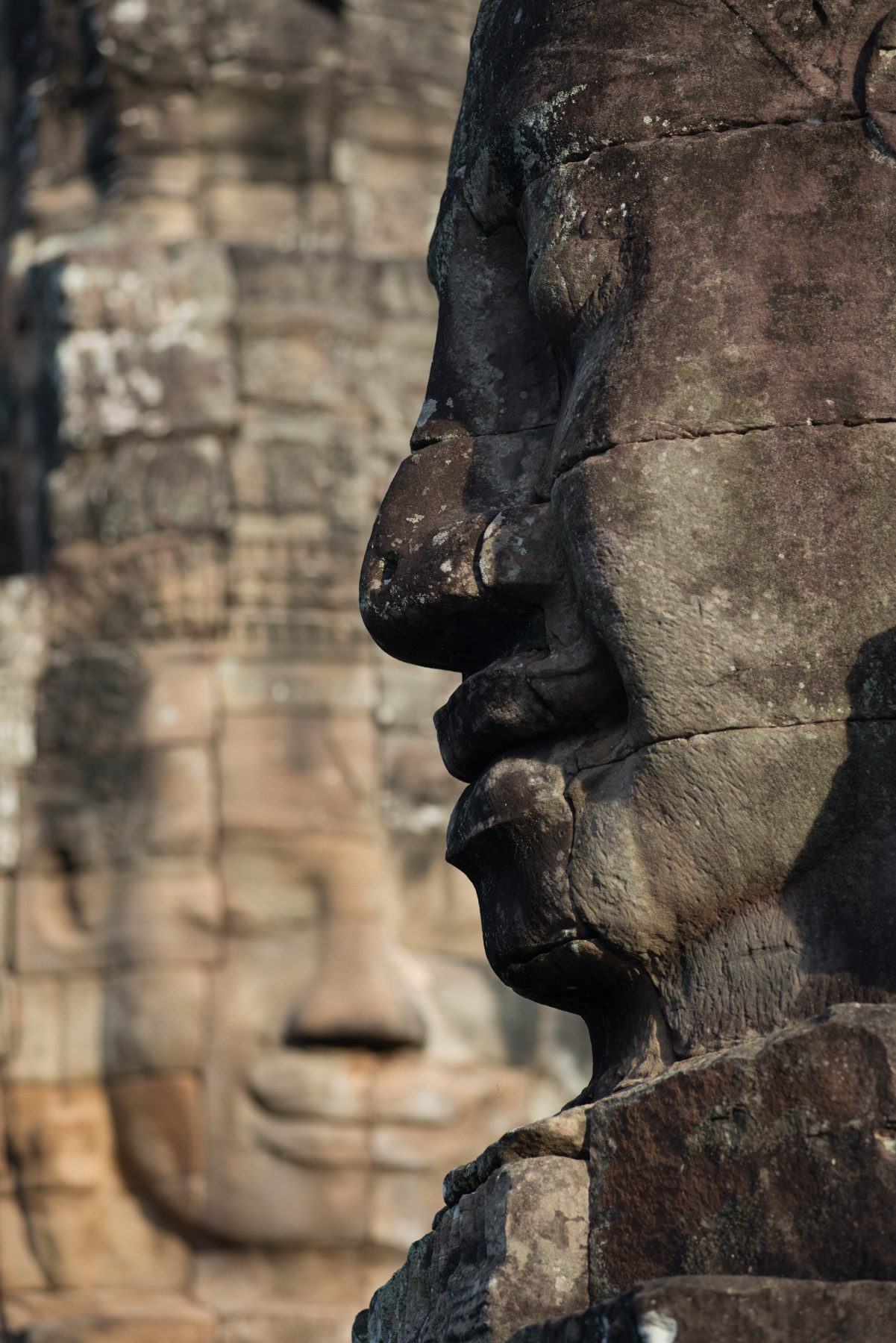
CM: Has it changed much since your first visit?
JMcD: Where do I begin? When I first visited it was exactly as I had read about it – mysterious stone temples overtaken by the jungle. I was a little surprised by how much local activity there was but when I realized that villages were spread throughout the archeological zone, I started to view Angkor as an organic entity. It was still very quiet then – just a few villagers going about their daily lives right next to ruins. Most of the people I talked to were surprisingly oblivious to the monumental history behind the temples. There was a tiny smattering of tourists, or rather travelers – long-term backpackers mainly. Only a couple of small wooden guesthouses. Very little traffic and all of that was on two wheels – either bicycles or motorbikes. It was peaceful and serene. You could go anywhere including Angkor Wat itself and find yourself totally alone. Now, of course, the Angkor complex is much more known and visited and huge crowds of tourists surround the better known temples. There are even stages built in front of some of the trees and temple locations where people stand to take ‘selfies’ and make their own portraits. There are also ongoing restoration projects in some temples, which is a positive step, but construction does sometimes obscure the temples. The mass of tourists mean you have to get off the beaten path and visit the bigger structures at less popular times of the day to really appreciate Angkor.

JMcD: The restoration affects the local population in the sense that it provides jobs, mainly labor. There are Cambodians working in all levels of the restoration teams but each temple has a different designated country sponsoring the restoration of that temple. And then there is the Apsara Authority which is the government’s management authority over the whole archaeological area. The impact of tourism on the economy is huge, of course, providing jobs for thousands of people, primarily in the service industries.
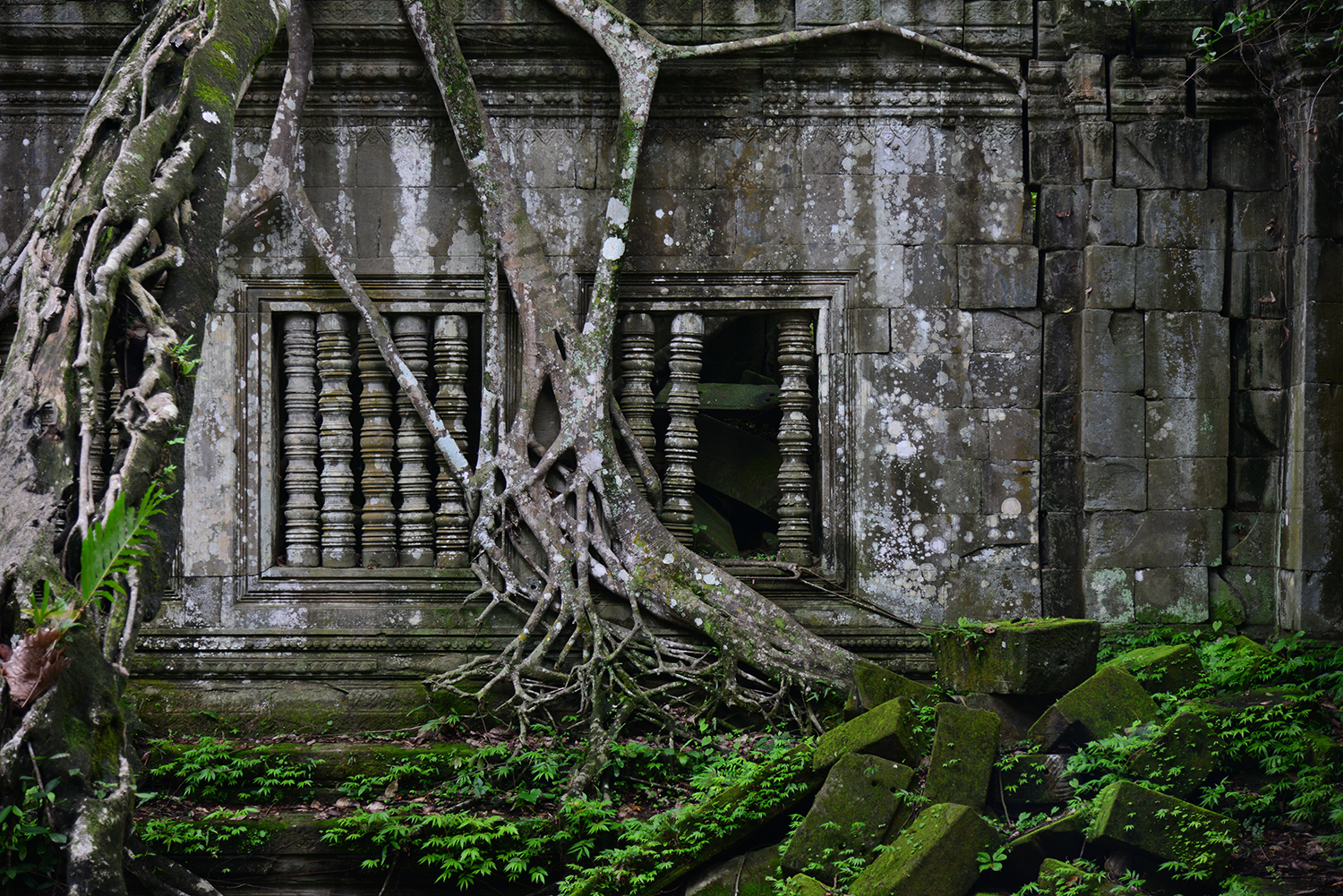

JMcD: The main challenge to photographing the temples are the crowds of people and the traffic they bring. The restoration work also poses a challenge to make good photographs of some of the temples. The restoration will eventually be completed at some point, but tourism numbers are increasing every year. That aside, a little bit of inside knowledge improves your chance of capturing Angkor Wat at its best.

JMcD: When I was first starting out on my Angkor project, I experimented with different kinds of film and later with different printing techniques and kinds of toning. I wanted a deep mood to infuse my pictures so I used a pictorialist approach. I found that the black-and-white infrared film was the only technique that captured the effect that I had in mind. I also experimented with selenium and sepia toning and found that the split toning gave it more depth and dimension.
I also made a special effort to avoid anything that would date the images. No tourists, no t-shirts or baseball caps, no motorbikes, no plastic trash– any indicators of a time frame were avoided. I wanted the images to appear as if they could have been made five years ago or fifty years ago, or even a hundred years ago. The soft pictorialist nature of the pictures added to that.

JMcD: For my most well-known project I only used black-and-white infrared film – a film made by Kodak that unfortunately has been discontinued. The infrared film is sensitive to light just below the visible spectrum, which gives it a surreal quality. It turns green vegetation white or light grey, and blue skies are almost black. It also adds a sort of veil across the image that is hard to describe, but it is there. And the inherent graininess of the film can make some images seem like etchings rather than a photograph. I had always envisioned my images as the temples looked when I witnessed the eclipse. There is a very short period of time just before and after the moments of totality where everything becomes a monochromatic scene – no color, just platinum light that is very surreal. I found that the infrared film gave me something close to that eerie appearance and then when I toned my prints it gave me the depth that I was looking for. I had found the style that I wanted for the whole project. I shoot digital now for all my color and commercial work, but I still shoot with black-and-white film, and I have35mm and medium format rolls of infrared that are still in my freezer waiting for the right subject.

JMcD: When I first came to Angkor in 1995, I had no idea that I would end up living here and making it a long term artistic project. The second time I visited was in 2000, after the death Pol Pot and the collapse of the last remnants of the Khmer Rouge. I noticed the first signs of tourism and that set off alarms in my head. I realized that the fuse had been lit and tourism would explode in the not so distant future. I also realized that that would mean the temples would change and may never be the same again both aesthetically and physically. I had been looking for a book project and decided that this was it – I needed to make a photographic portrait of the temples in as timeless fashion as I could before it would be less possible. My original goal had been to do a book but in 2004 when I was offered a beautiful space to open a gallery, I decided to take the opportunity. Having never run a gallery before, I found to my surprise it ended up taking up almost 100 percent of my time and that meant that putting a book together would have to wait. By 2009, I’d pulled together the images for a book and thanks to a very generous donor who sponsored it, we published Elegy: Reflections on Angkor and printed it in Italy with the legendary art printers Editoriale Bortolazzi Stei. Just last year, I published the second edition of Elegy with fifty new images that were shot in more recent years. It is now available through my website accessed at www.asiaphotos.net. With all the time I spent on the galleries here – they had since grown to three locations – and the publication of the book, plus shooting in different locations throughout the region, I haven’t pursued exhibitions outside of my own galleries as much as I’d like. I did however do exhibitions in Los Angeles, New York and Hong Kong, along with other places around Asia. I am now actively pursuing further exhibitions and gallery representation internationally. I’ve extended my fine art project to other sacred sites in Asia as well as Petra in the Middle East and I plan to photograph more ancient sites throughout the world. I also run photography workshops and expeditions in Angkor. My one-day photo tours are customized for each client and usually limited to just one or two people. However, in partnership with See Asia Differently, I also offer a fantastic eight-day photo workshop in Cambodia and we are planning a similar workshop in Myanmar, where I’ve shot extensively.
JMcD: My philosophy is to create a memorable, authentic experience that is tailored to each individual photographer. Each person should come away with an entirely new way of looking at the temples. It is not so much a technical approach I use as it is helping to develop a visual channel for looking at the scenes around you. My eight-day photo workshops are small – no more than ten people – so that I can work in depth with each participant. These are set up to offer enthusiastic photographers a private expedition and workshop through the Angkor Archaeological Park or, in the future, through special sites in Myanmar, and are photo-intensive. There are daily expeditions and then in the evenings we have discussions and reviews of the participants’ work. I also offer technical assistance and post-processing advice along the way and they will learn my philosophy behind making good photographs. Whether it’s photographing the temples of Angkor or the floating villages on the Tonle Sap lake or the rice fields and villages of the Cambodian countryside, each participant will have a personal, informative and fun experience.

JMcD: The villages on the Tonle Sap are always interesting – some are stilted and some are floating. They all have a lot of texture and show a unique way of life. Down in the south around Kampot and Kep the landscape is quite dramatic with limestone karsts and hills and forest, as well as the coastline at Kep. Anywhere in the Cambodian countryside can be beautiful as you can always find good images if you follow the light.
John McDermott has partnered with See Asia Differently to run an eight-day photograph expedition throughout Angkor and the surrounding areas of Cambodia. Guests will be staying at the 5 star Borei Angkor Resort and Spa. Tour dates are 5-13 December, 6-14 February with more planned for 2016.
To book or to find out more visit http://www.seeasiadifferently.com/south-east-asia-group-tours/john-mcdermott-photography-tours-angkor/ or contact sales@seeasiadifferently.com or call +44 (0)208 150 5150
